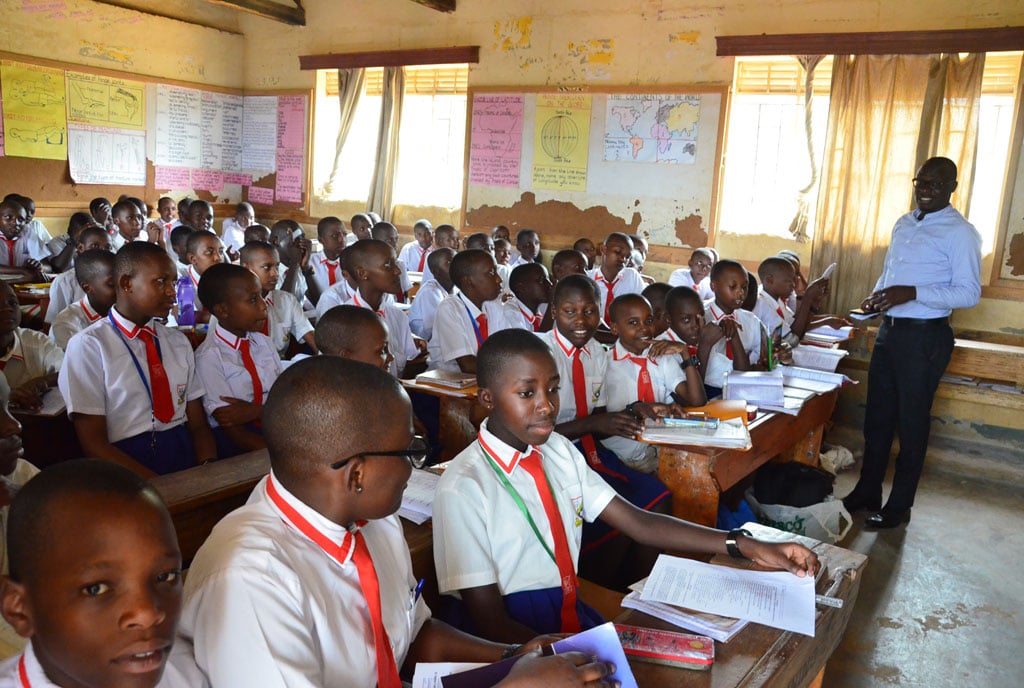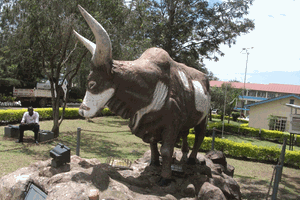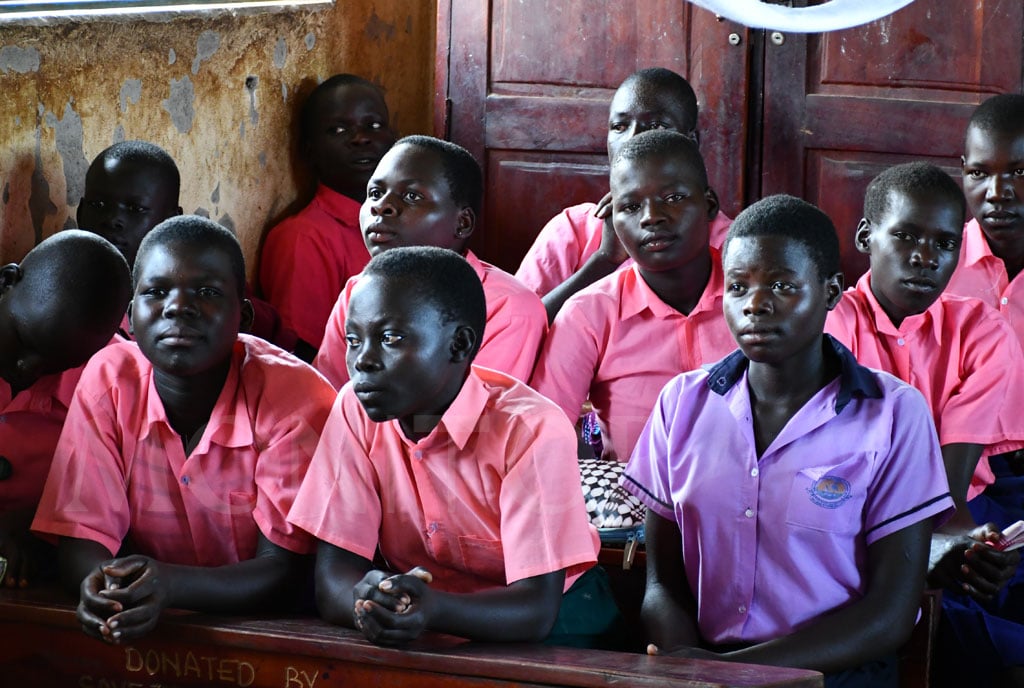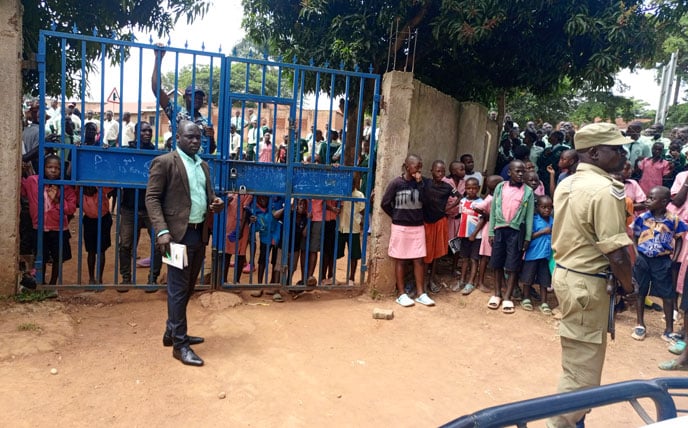
One of the Primary Seven classes in session at Mbarara Municipal School in Mbarara City. PHOTO/ JULIUS BYAMUKAMA.
Recently, a team of school inspectors from central and eastern Uganda were in western Uganda looking at how the schools are implementing government policies regarding primary education. Their major focus was on the facilities, enrollment in schools and how schools are managed. It was then, that they discovered how Mbarara Municipal School was highly populated. The officials called for government’s quick intervention and support to rescue the school by recruiting more government teachers and constructing new classrooms to accommodate the large number of learners at the school.
“When we hosted inspectors at our school they found out that the school lacks teachers, especially government teachers because the population is big. We have the recommendation that there is a need for recruitment of teachers because it is obvious, our school has more than 4,000 children with only 62 government teachers on payroll. The rest of the teachers are paid by parents which is a huge task and we believe that if the government carries out recruitment for teachers, we shall benefit,” Mr Wilberforce Nkwasibwe, the Mbarara Municipal School headteacher says.
He adds that they do not have enough classrooms due to the large pupil population.
“We call upon the government to help schools such as ours to construct more classrooms and provide seats for learners because it is necessary as far as performance is concerned. The teacher-pupil ratio is high because a class accommodates more than 100 children and teachers find it difficult to handle such classes,” he explains.
However, Ms Peace Nakato, the head girl says, as pupils, they are not affected by the numbers since they are divided into streams.
“We are very many at school but that does not affect us because we are divided into streams. The number of pupils that is accommodated in one stream is fair for everyone to grasp what the teacher is teaching,” she says.
Need for staff and infrastructure
Ms Robinah Nakimuli, the Inspector of Schools from Nakasongola District, says they found out that Mbarara Municipal School has an overwhelming number of learners at school. She thus asks the government to recruit and post more teachers at the school as well as construct more buildings including classrooms, dormitories and latrines to accommodate learners.
Nakimuli ays: “This is a very good school because according to the interview we did, their performance is good, but if they get a boost in the staff and structures such as pit latrines, I feel they would do much better than we found it.”
The Mbarara District inspector of schools and chairperson Uganda National Inspectors Association (UNISA) Ms Kellen Ayebazibwe, says they found out that some schools have higher enrollment but have few government-paid teachers. Ayebazibwe thus calls for the government's quick intervention.
“With private teachers paid by the parents, we request the government to come in and to improve on teacher-pupil ratio so that teachers can handle classes of at least 53 pupils as per the guideline from the Ministry of Education,” she says.
Underage in boarding section
Ms Ayebazibwe says through the inspection, they have found out that some schools have young children of four to five years in the boarding section which is not recommended by the government. She requests parents to do their part and look after the young children from zero to eight years as opposed to subjecting them to boarding school.
Ms Mary Frances Atima, head of the Directorate of Education Standards at the Ministry of Education and Sports, says issue of over-enrollment in schools is brought about by a number of factors such as the good performance of a particular school which lures parents to enrol their children there. However, she thus asks schools to always stop enrolling once they reach the maximum.
Have a maximum intake
“Of course, schools with issues of over-enrollment, sometimes there are different things that lead to that; top of the list is good performance. Once there is good performance parents will take children to that school and it will suffer a surge in numbers. However, schools also need to agree that once they have reached the maximum that is it. Why do you continue enrolling more than the facilities that you have, more than teachers that you have when they are also other schools available,” Ms Atima says.
She adds: “What we need to do is to ensure that also the other available schools meet at least the basic requirements so that parents are comfortable to take their children there. That is the only way we can decongest because some of the schools we went to are already beyond capacity. They do not even have space for expanding and the only thing is to see how we can decongest by ensuring that other schools are also performing well.”



